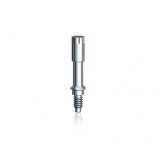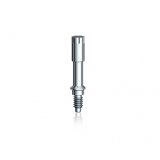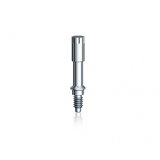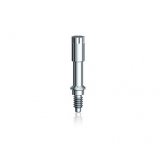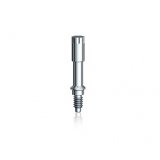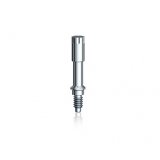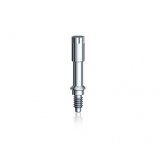No products
To be determined
Shipping
0,00€
Total
Product successfully added to your shopping cart
Quantity
Total
There are 0 items in your cart.
There is 1 item in your cart.
Total products
Total shipping
To be determined
Total
Penguin RFA + Multipeg for Sigma
The PenguinRFA measures implant stability and osseointegration to provide sufficient information to make a decision when to load an implant.
Compatible with all major implant systems.
Please choose MulTipegs for dental implants you use here
- - Reduce treatment time
- - Manage risk patients
Compatible with all major implant systems.
Please choose MulTipegs for dental implants you use here
The PenguinRFA measures implant stability and osseointegration to provide sufficient information to make a decision when to load an implant. Equipped with Multipeg for Sigma Implants system.
Once attached to an implant, magnetic pulses cause the MulTipeg™ to vibrate. The instrument measures the frequency of the vibration and translates it to an ISQ scale value between 1 and 99. The higher the ISQ value, the better the stability.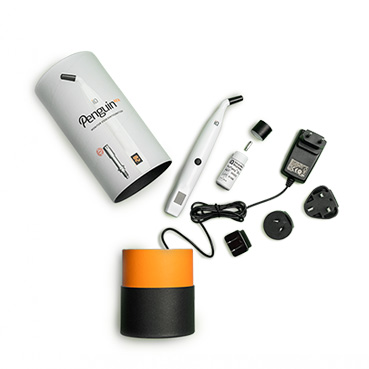
The Instrument Kit Includes:
• PenguinRFA Instrument
• Charger
• MulTipeg™ Driver
• Users Manual
Made in Sweden
Once attached to an implant, magnetic pulses cause the MulTipeg™ to vibrate. The instrument measures the frequency of the vibration and translates it to an ISQ scale value between 1 and 99. The higher the ISQ value, the better the stability. RFA measures implant stability as a function of interface stiffness, which correlates with implant displacement, i.e. micro-mobility. The local bone density determines the ISQ value, and is influenced by factors such as the implant placement technique, implant design and healing time. Implants with low and/or dropping ISQ values seem to pose an increased risk for failure compared with implants with high and/or increasing values.

The ISQ-scale, 1-99 ISQ
Values above ISQ 70 indicate a very stable implant with low micro-mobility. This value is typically recommended for one-stage and immediate loading. A second measurement is recommended before the final restoration to verify osseointegration.

Osseointegration
Values in the range of 75 ISQ means the implant is already so stable that osseointegration cannot add stability in a significant way. The proof of osseointegration is the lack of a drop in ISQ.
If the implant has a low initial ISQ, let’s say 55, osseointegration will add stability over time.
The ISQ value correlates also to implant micro mobility, as shown in the articles below Trisi P, Carlesi T, Colagiovanni M, Perfetti G Implant Stability Quotient (ISQ) vs direct in-vitro measurement of primary stability (micro motion): effect of bone density and insertion torque J Osteol Biomat 2010; 1:141-151 | ID:-354 | Pagliani L (L) ; Sennerby L (L) ; Petersson A (A) ; Verrocchi D (D) ; Volpe S (S) ; et al. The relationship between resonance frequency analysis (RFA) and lateral displacement of dental implants: an in vitro study. J Oral Rehabil ; 2013-Mar ; 40(3):221-7

The Procedure
By mounting a MulTipeg the measurement is made in a second. Just aim for the magnet on top of the MulTipeg. Non-invasive, objective, accurate and repeatable.
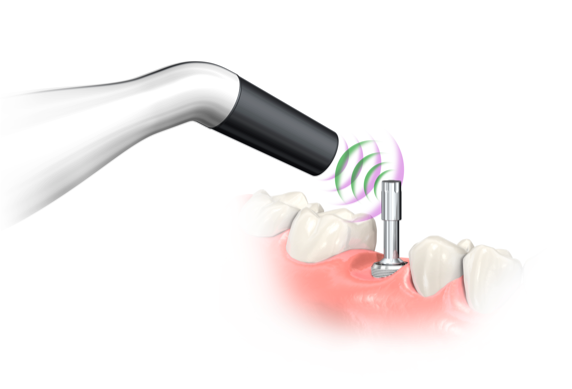
The Technique Behind
The technique is Resonance Frequence Analysis (RFA) and the measurement unit is Implant Stability Quotient (ISQ). The peg is excited by magnetic pulses and vibrates due to the stiffness in the contact area between the bone and the implant surface.
Compatible with all major implant systems.
Please choose MulTipegs for dental implants you use here.
Once attached to an implant, magnetic pulses cause the MulTipeg™ to vibrate. The instrument measures the frequency of the vibration and translates it to an ISQ scale value between 1 and 99. The higher the ISQ value, the better the stability.

The Instrument Kit Includes:
• PenguinRFA Instrument
• Charger
• MulTipeg™ Driver
• Users Manual
Made in Sweden
Once attached to an implant, magnetic pulses cause the MulTipeg™ to vibrate. The instrument measures the frequency of the vibration and translates it to an ISQ scale value between 1 and 99. The higher the ISQ value, the better the stability. RFA measures implant stability as a function of interface stiffness, which correlates with implant displacement, i.e. micro-mobility. The local bone density determines the ISQ value, and is influenced by factors such as the implant placement technique, implant design and healing time. Implants with low and/or dropping ISQ values seem to pose an increased risk for failure compared with implants with high and/or increasing values.

The ISQ-scale, 1-99 ISQ
Values above ISQ 70 indicate a very stable implant with low micro-mobility. This value is typically recommended for one-stage and immediate loading. A second measurement is recommended before the final restoration to verify osseointegration.

Osseointegration
If the implant has a low initial ISQ, let’s say 55, osseointegration will add stability over time.
The ISQ value correlates also to implant micro mobility, as shown in the articles below Trisi P, Carlesi T, Colagiovanni M, Perfetti G Implant Stability Quotient (ISQ) vs direct in-vitro measurement of primary stability (micro motion): effect of bone density and insertion torque J Osteol Biomat 2010; 1:141-151 | ID:-354 | Pagliani L (L) ; Sennerby L (L) ; Petersson A (A) ; Verrocchi D (D) ; Volpe S (S) ; et al. The relationship between resonance frequency analysis (RFA) and lateral displacement of dental implants: an in vitro study. J Oral Rehabil ; 2013-Mar ; 40(3):221-7

The Procedure
By mounting a MulTipeg the measurement is made in a second. Just aim for the magnet on top of the MulTipeg. Non-invasive, objective, accurate and repeatable.

The Technique Behind
The technique is Resonance Frequence Analysis (RFA) and the measurement unit is Implant Stability Quotient (ISQ). The peg is excited by magnetic pulses and vibrates due to the stiffness in the contact area between the bone and the implant surface.
Compatible with all major implant systems.
Please choose MulTipegs for dental implants you use here.










